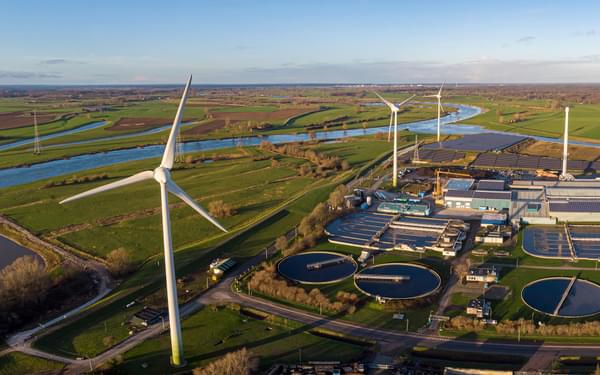
Tougher standards are what marks out the latest edition - version 7 - of BREEAM for new construction projects in the UK.
"This isn't incremental change," says Marion Delaney, Associate, in Hydrock, now Stantec's environmental benchmarking team. "This is a comprehensive overhaul of a well-established benchmark that helps investors and tenants determine the sustainability credentials of a building.
"No longer is BREEAM just about design and construction. It's now targeting efficiencies in operation too," Marion confirms.
Notable change is demonstrated in sharpening the standards for carbon reduction, climate resilience and health and wellbeing. It helps BREEAM align with global standards and sustainability best practice - for example biodiversity net gain regulations - and there is a real focus on occupant wellbeing.
Positive enhancements
There are a number of improvements that strengthen BREEAM through this latest version. These include:
- Better alignment with BREEAM In-Use, which will encourage a more consistent approach to sustainability from the design and construction phases through to the building's operational phase; tracking the same KPIs throughout the building's lifecycle.
- Additional credits to address the operational efficiencies, which now means shell-only projects won’t be able to achieve a BREEAM Outstanding rating.
- Alignment with the principles of the London Plan, widely recognised as the most advanced sustainability policy in the UK, which provides a much-needed update to sustainability standards and best practices. This empowers developers, designers, and sustainability professionals to push the boundaries of what is possible.
- Greater emphasis on operational and embodied carbon reduction, and a greater focus on use of daylight and lighting to reach the minimum standards for BREEAM Excellent and Outstanding.
- Alignment with EU Taxonomy so projects meet the regulatory requirements and criteria for sustainable finance.
- More credits can be achieved for buildings that are gas-free.
- Credits can be gained for accurately predicting water use based on expected occupancy rather than standard occupancy.

Changes to health and wellbeing, and energy sections
The most significant changes are in the health and wellbeing and energy sections with both new and revised criteria. These include daylight modelling to demonstrate illuminance levels based on analysing annual climatic data, and expanded credits for energy and carbon performance.
Notable improvements include:
- New prerequisite on managing flicker and stroboscopic effects and a new credit for lighting that supports a healthy circadian rhythm.
- Changes to daylight calculations that require computer-based modelling using climatic data, with additional considerations for residential and healthcare buildings.
- Credits awarded on the proportion of energy-efficient equipment used, to encourage the use of more sustainable appliances.
- Incentivising systems that can shift building energy demand at key times to reduce peak energy use and support grid stability.
"These updates reflect BREEAM's commitment to enhancing sustainability standards, aligning with EU taxonomy, and encouraging practices that support a zero-carbon transition and ecological conservation," says Marion.
"Inevitably with the revised criteria and additional credits, the credit weightings have changed.
"Emphasis is placed on the performance of the building making energy consumption key in targeting the higher ratings," Marion adds.
The BREEAM standard now takes a holistic approach through each stage of the building process - design, construction, and in-use - providing a recognised, third-party certification that assures stakeholders of a building's sustainability performance.

Social value credits - a missed opportunity?
"In terms of the positive impact we want the built environment to have on communities, I'd argue it's now time for credits for social value too," says Marion.
"Social value is usually considered at the construction stage of a building, but the social value generated in delivering a building to its community and stakeholders is often overlooked.
"BREEAM assessments should be encouraging project stakeholders to develop an engagement strategy with local communities. This would ensure social value is properly considered to ultimately benefit the communities the buildings are located in, leaving a better legacy for future generations," Marion concludes.
Our assessors can guide your projects
Our team of experienced and accredited BREEAM assessors will help you navigate the updated criteria and achieve higher ratings for your projects.
Through full lifecycle assessments, we ensure that buildings perform sustainably from design through to operation. We tailor bespoke strategies to align with BREEAM version 7's latest standards and can streamline the certification process by integrating BREEAM requirements into a project’s digital workflow.
The value is delivering built environment projects that are resilient to climate change, low in impact, and high in occupant comfort. It's these buildings that will generate the greatest demand and asset value, and benefit their communities and stakeholders.
For more information on BREEAM and our approach to the full suite of environmental and sustainability benchmarks, please contact:
Marion Delaney, Associate
Michael Davey, Associate Director











